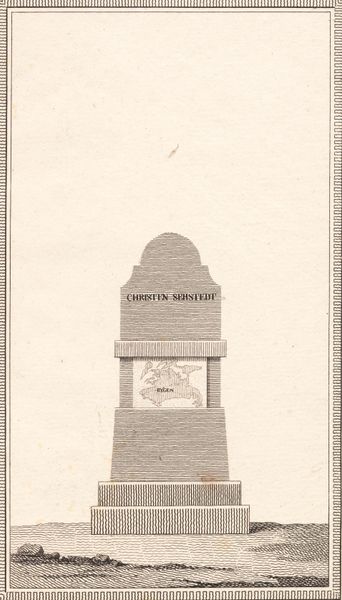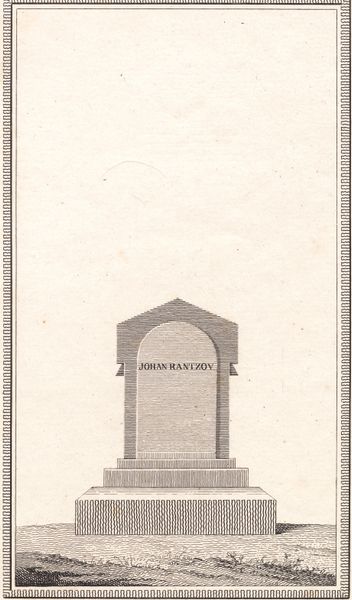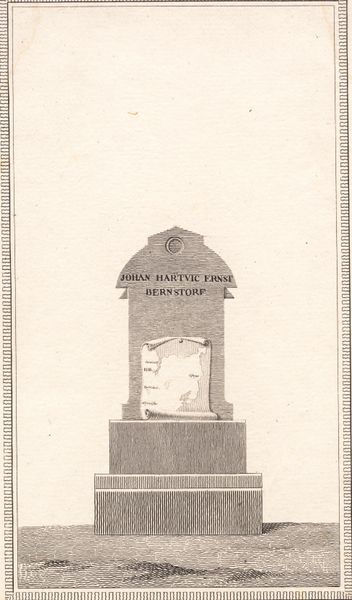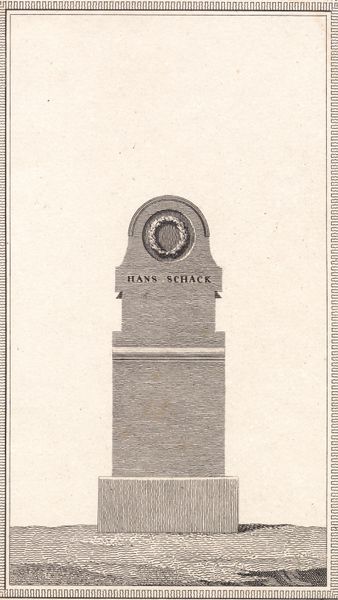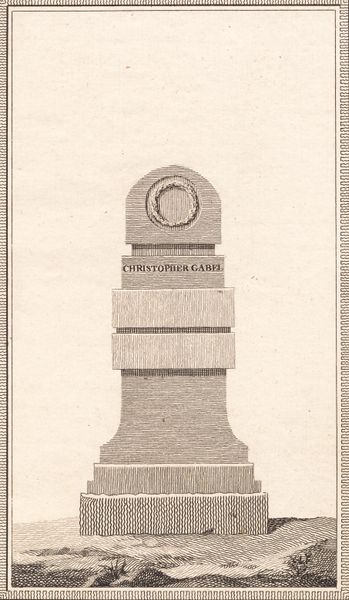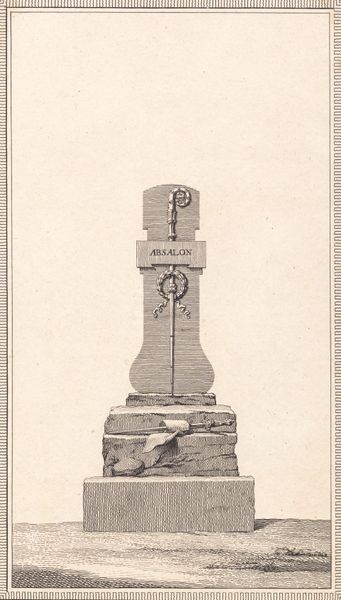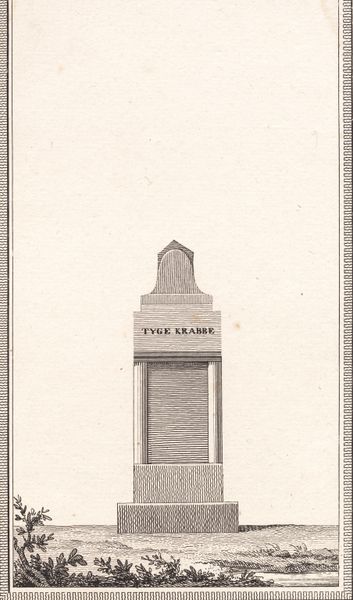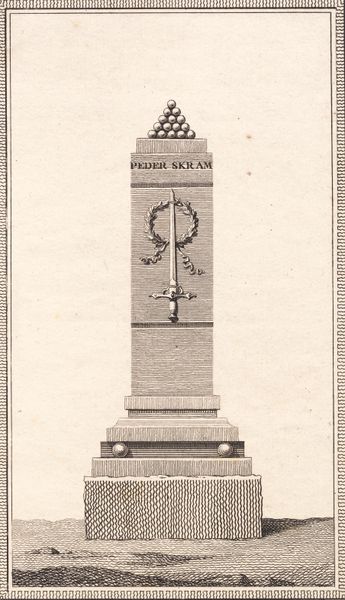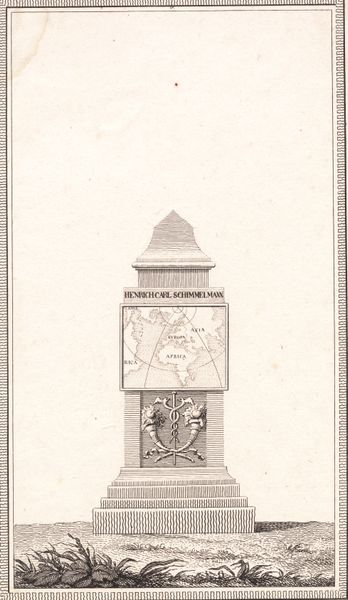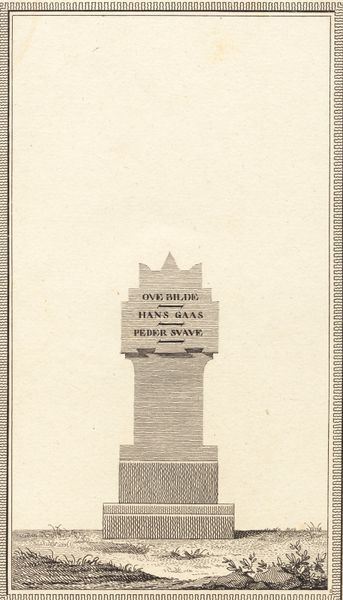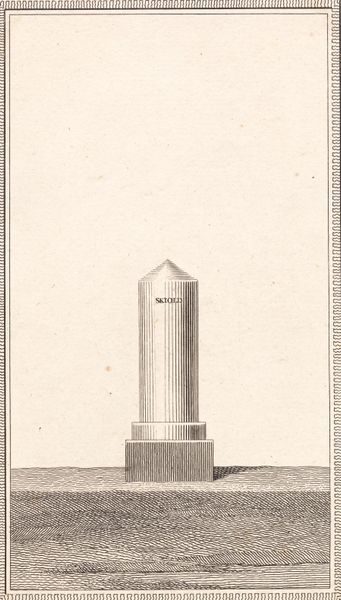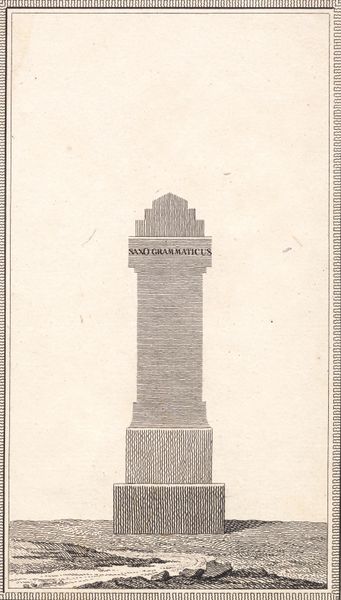
print, etching, engraving
# print
#
etching
#
landscape
#
history-painting
#
engraving
Dimensions: 180 mm (height) x 104 mm (width) (billedmaal)
Curator: I notice how this etching by J.F. Clemens from around 1780 of "Niels Ebbesen" prompts reflections on nationalism and heroism. It’s a landscape focused on this monument, but the way the monument is represented strikes me. What do you make of it? Editor: It's really stark. The detail is incredible for a print. What jumps out at me is how the landscape is quite empty save the monument itself. The stark landscape makes it even more poignant, this idea of a lone hero. How do you interpret it? Curator: I see a direct commentary on the making and maintaining of national identity through material means. The printmaking process itself is key here – etching and engraving were accessible forms of image production, allowing for wide dissemination of these heroic narratives. Consider the labor involved in creating this print, reproducing it, and then distributing it. How does that affect its meaning? Editor: It democratizes the image, making it available beyond the elite. Is the monument itself democratized then, through its material reproduction? Curator: Precisely! The etching transforms the monument into a consumer product, reinforcing its message across society. The artist’s choice of materials underscores the importance of these accessible images in the shaping of national identity and cultural values. What I find particularly fascinating is how this connects the historical narrative to contemporary consumption. Editor: That’s really interesting, thinking about it as not just a historical representation but as a tool for constructing national identity through its production and distribution. It makes me think differently about how we consume historical narratives today. Curator: Absolutely! It illustrates the powerful interplay between art, materials, and social context. These accessible printmaking processes reflect and shape political sentiment.
Comments
No comments
Be the first to comment and join the conversation on the ultimate creative platform.
